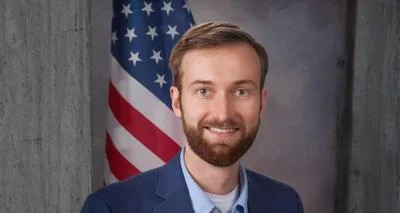Interim President Teresa K. Woodruff, Ph.D. | Michigan State University
Interim President Teresa K. Woodruff, Ph.D. | Michigan State University
The U.S. Supreme Court is expected to rule soon on City of Grants Pass, Oregon v. Johnson, which concerns laws regulating camping on public property that could drastically affect the rights of people experiencing homelessness. The case will address whether laws punishing homeless individuals for sleeping outdoors with basic protections such as a pillow or blanket, when no safe and accessible shelter options are available, violate the Eighth Amendment of the U.S. Constitution. This amendment protects against excessive bail, fines, and cruel and unusual punishment.
Deyanira Nevarez Martínez is an assistant professor in the Urban and Regional Planning Program in the School of Planning, Design and Construction in the colleges of Agriculture and Natural Resources and Social Science. Nevarez Martínez’s expertise focuses on the role of the state in homelessness and housing precarity and informality. She was part of a group of social scientists who submitted an amicus brief with peer-reviewed research on homelessness in support of the plaintiffs.
Her research in Southern California demonstrates how local enforcement of anti-homeless ordinances not only fails to resolve but also intensifies the plight of the unhoused by stripping away their dignity and autonomy.
Nevarez Martínez answers questions about the case ahead of the ruling.
If the court rules to eliminate encampments, what are the implications?
"If the Supreme Court rules in favor of the city of Grants Pass," she states, "it could exacerbate homelessness by criminalizing unsheltered homelessness even when there is no available shelter." This would result in more people with criminal records, making it harder for them to find jobs and housing while forcing them to deal with legal issues rather than addressing personal barriers. "Jails are dangerous for unhoused people," she adds, "and may be worse than living on the streets."
Additionally, people would lose crucial community ties. Criminalizing homelessness increases conflict and hampers community efforts to address it by pitting people against each other instead of encouraging collaboration.
By ruling in favor of unsheltered individuals who brought this case forward, "the court would affirm that everyone in the community is valued" and that local governments should ensure decent conditions for all rather than targeting certain individuals for incarceration or exclusion.
If the court rules to allow homeless encampments when there are no other shelter options available, what are the implications?
A ruling allowing homeless encampments when there are no other shelter options available would set a significant legal precedent. It would affirm that cities cannot criminalize homelessness under these circumstances. Such a decision could impact numerous municipalities across various jurisdictions requiring them to adjust their policies and practices accordingly.
Cities might need to reevaluate their policies increasing funding for shelters affordable housing support services providing viable alternatives encampments concerns about public health safety necessitating strategies manage sanitation healthcare security services economic implications potential increases costs associated providing necessary services developing permanent housing solutions long-term savings reducing strain emergency services healthcare systems influencing community relations facilitating dialogues creating policies addressing concerns stakeholders upholding rights unhoused population
Ultimately pushing sustainable long-term solutions emphasizing importance addressing root causes lack affordable housing mental health services employment opportunities necessitating comprehensive multifaceted approach involving collaboration government agencies nonprofits community
Is number people living homeless encampments rise?
While not all individuals experiencing unsheltered homelessness reside encampments have become emblematic rise unsheltered homelessness United States particularly number unsheltered individuals continues increase problem most acute major cities West Coast markets seen major spikes housing prices issue prevalent rural areas cities traditionally thought affordable
Based your research what public perceptions encampments?
Research indicates public perceptions urban encampments generally negative viewed problematic residents businesses perception often leads support policies criminalize despite evidence such policies effectively address root causes reduce prevalence influenced concerns over safety visibility important keep mind however social science research unhoused communities consistently shown punitive approaches only exacerbates vulnerability entrenches deeper cycles poverty marginalization
Why do people remain encampments even when other forms shelter available?
Individuals may find less stressful remain controlled familiar outdoor setting shelters restrictive rules curfews accommodate specific circumstances having partner pet needing store personal belongings addition some require participation religious services activities align beliefs needs accept identity example LGBTQIA+ folks feel unsafe spaces disclose identity being there
Do those contribute increases crime drug abuse communicable diseases?
While research indicates associations increased visibility crime drug abuse communicable disease real issue causing situations lack stable housing support enforcement anti-homeless laws contribute increased victimization disrupting established security social support forced relocation hinder access healthcare sanitation contributing spread example
What happens government disbands encampments?
When local governments clear displaced individuals move nearby public spaces because don’t have oftentimes leads cycle relocation without resolving underlying issues process known spatial churn results frequently moving different areas remaining displacement forces hazardous locations started pose risks traffic accidents environmental hazards expose elements climate change worse conditions problem heat exposure flooding hurricanes






 Alerts Sign-up
Alerts Sign-up